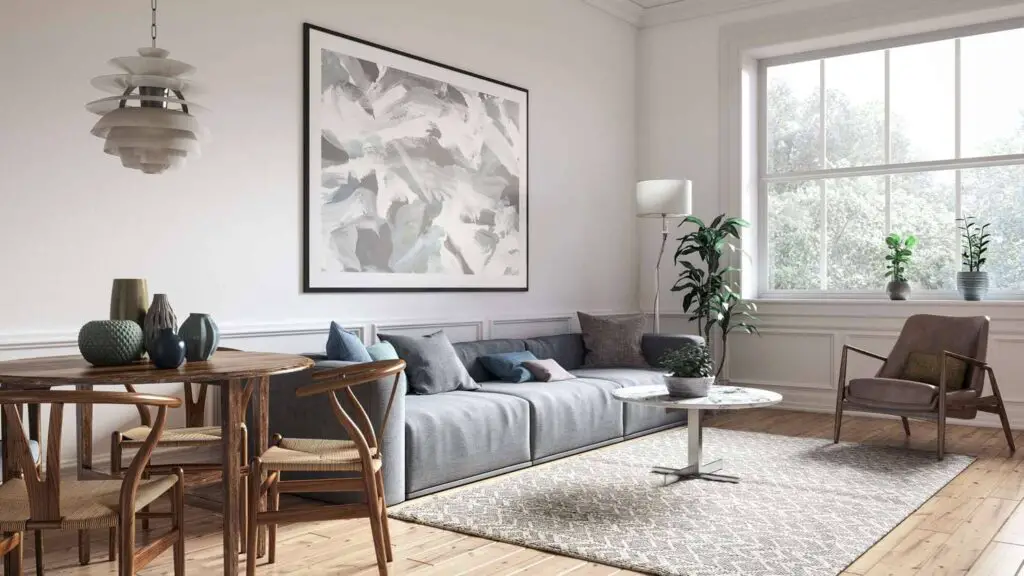Creating the perfect living room layout can be a daunting task. The arrangement of chairs and sofas plays a crucial role in defining the space, enhancing comfort, and promoting conversations. To help you design a living room that is both functional and aesthetically pleasing, we have compiled a comprehensive guide on the best practices for arranging chairs and sofas in your living room.
Understanding Your Space
Before you start moving furniture, take a moment to analyze your living room. Measure the dimensions and note the locations of doors, windows, and focal points like fireplaces or entertainment centers. Understanding your space allows you to make informed decisions about furniture placement.
Measure and Plan
Use a tape measure to determine the length and width of your room. Sketch a floor plan to visualize different furniture arrangements. Consider traffic flow and ensure there is enough space for people to move around comfortably.
Identifying the Focal Point
Every living room needs a focal point to anchor the design. This could be a fireplace, a large window with a view, a piece of artwork, or a television. Once you have identified the focal point, arrange your chairs and sofas to emphasize it.
Align Furniture with the Focal Point
Place the main seating piece, such as a sofa, directly facing the focal point. This arrangement creates a natural gathering spot and encourages conversation. Additional chairs should be positioned to complement this setup, ensuring they also have a view of the focal point.
Creating Conversation Areas
A well-designed living room promotes interaction and conversation. Arrange your furniture to facilitate easy communication among guests.
Forming Groupings
Group chairs and sofas together to create intimate conversation areas. A U-shaped or L-shaped arrangement works well for larger spaces, while a circular layout is ideal for smaller rooms. Ensure that seating pieces are close enough for people to speak without raising their voices.
Using Area Rugs
Area rugs help to define conversation areas and anchor furniture. Choose a rug that is large enough to fit all seating pieces, or at least the front legs of each piece, to create a cohesive look.
Balancing Proportions
Balance is key to a harmonious living room. Ensure that the size of your furniture matches the scale of the room.
Choosing the Right Size Furniture
Avoid overcrowding a small living room with oversized furniture. Opt for slim, low-profile pieces to create an open and airy feel. In larger rooms, use substantial pieces that fill the space without overwhelming it.
Maintaining Visual Balance
Distribute furniture evenly throughout the room to avoid a lopsided look. Pair larger pieces, like a sofa, with smaller items, such as chairs or side tables, to achieve a balanced arrangement.
Optimizing Traffic Flow
Consider how people will move through the room. An efficient layout provides clear pathways and minimizes obstructions.
Creating Clear Pathways
Leave at least 2-3 feet of walking space between furniture pieces to ensure easy movement. Arrange furniture in a way that directs traffic around, rather than through, conversation areas.
Avoiding Clutter
Too much furniture can make a room feel cramped. Edit your furnishings to include only the pieces you need, and use multi-functional items, like storage ottomans, to reduce clutter.
Incorporating Flexibility
Your living room should be adaptable to different occasions and needs.
Using Lightweight Furniture
Opt for lightweight chairs and tables that can be easily moved to accommodate different activities. Modular furniture, like sectional sofas, allows you to reconfigure the layout as needed.
Incorporating Movable Pieces
Add movable pieces, such as stools or poufs, that can be brought in for additional seating when needed and tucked away when not in use.
Enhancing Comfort and Functionality
A comfortable living room is a welcoming space for both family and guests.
Positioning for Comfort
Ensure that seating is comfortable and positioned at a reasonable distance from each other and the focal point. Consider sight lines and ensure that every seat has a good view.
Adding Functional Elements
Incorporate side tables and coffee tables to provide convenient surfaces for drinks and snacks. Ensure that these tables are within easy reach of seating areas.
Considering Aesthetics
A well-arranged living room should be visually appealing as well as functional.
Choosing a Color Scheme
Select a color scheme that reflects your style and complements the room’s décor. Coordinate your furniture and accessories to create a harmonious look.
Using Accessories
Add accessories, like throw pillows, blankets, and artwork, to enhance the room’s aesthetic. Layer textures and patterns to add interest and depth to the space.
Conclusion
Arranging chairs and sofas in your living room is a blend of art and science. By considering the room’s dimensions, focal points, traffic flow, and balance, you can create a space that is both functional and beautiful. Follow these best practices to design a living room that promotes comfort, conversation, and style.


